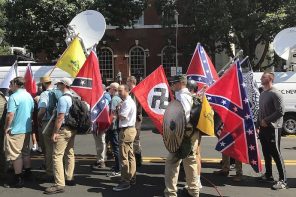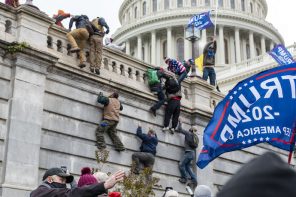We still don’t know everything about who organized the boats, coming up on the beach at a fisherman’s colony near Sassoon Dock in Mumbai. The custodian shone a flashlight, then waved the kids on, perhaps thinking it was another midnight revelry on the beach.
But we do know some things. Azam Amir Qasab (a.k.a Kasab or Kasav), one of the terrorists in custody, hails from the Pakistan-occupied part of Kashmir. The Times of India reports that, after the shoot-out at the CST railway station he feigned death, until hospital workers determined otherwise. Originally tight-lipped, when he saw the mutilated body of his comrade, a resident of Punjab in Pakistan, he broke down and told authorities what he knew, including that he was trained by militants of the Lashkar-e-Taiba in Pakistan for three months. After having conducted a reconnaissance of Mumbai a month back, they were instructed to target whites, to cause “maximum casualties in Mumbai,” and to “kill until the last breath.” Their goal, they said, was to create an Indian 9/11, targeting south Mumbai as the major economic center. Much of their modus operandi was based on the Marriott Hotel bombing in Islamabad which killed over 50 people in September.
The Violence Mirrored Mumbai
The 9/11 analogy is problematic from any number of perspectives, whether it is made by the terrorists themselves or by those commenting on the events. As Ravinder Kaur has recently noted, this analogy creates an overly simplistic understanding of the complex history of violence in India, and between India and Pakistan, fostering a global narrative that ignores local events and local causes. Indeed, what strikes me most about the horrific events in Mumbai is the local sense of place that that the terrorists tried to destroy. In the Mumbai attack, the violence mirrored Mumbai itself: sprawling, horizontal, through the sea and then on the ground. No one used the word “battle” during 9/11. But news reports from Mumbai used the word “battle” constantly as the Indian commandos tried to regain control. This was gun to gun, room to room, street to street combat.
Mumbai is a horizontal place. It grew from a set of seven interlocking islands that served as a series of seaports and trading ports. Mumbai prides itself on the numerous methods for traversing its massive urban territory. Its trains are cultural icons of the work ethic that Maharashtrians (people who live in the state of Maharashtra), and Mumbaikars (Mumbai citizens) in particular, embody. Its hospitals have become icons of “medical tourism” where many people, including Westerners, come to get first-class care for far less money. Even the dabbawallas—the hot lunch carriers who bring home-cooked meals to office workers—pride themselves on how fast they run, cycle, and ride to get the meals to their destinations. The dabbawallas start the Mumbai marathon every year, implying that they run a marathon across Mumbai every day.
Mumbai is about a sprawling and relaxed sense of welcome, both secular and religious: the Haji Ali mosque rises far out into the sea for all those stuck in traffic to marvel at; Christian churches and Hindu shrines dot every corner in the northern neighborhood of Bandra; the Jewish synagogue of Magen David has in the past few years been refurbished and painted a cheerful, unmistakably bright blue. An old Mumbai friend of mine used to tell me how, after an all-night party, he would race down Marine Drive at 4 a.m. and watch the Mumbai lights, knowing that it was safe to do so. Marine Drive was his memory of the first tastes of adolescent freedom.
The terrorists’ sense of place was remarkable, and held up a dark mirror to the spirit of Mumbai’s openness. In Mumbai, you can hide in this openness and the terrorists’ message was loud and clear: Mumbai’s open welcome was now closed. When the first gunmen opened fire in the hotel lobby of the Taj, the crowd moved in the opposite direction, out of the their path. But coming from that opposite direction, another gunman opened fire. There was no place to hide.
The targets chosen were not a single hotel, or a single business center, but places all over south Mumbai—anywhere you sought safety you would be met by violence. Many targets were symbols of the elite: the Taj, a large and now mostly symbolic structure welcoming sea travelers, where wealthy globetrotters stay and middle-class travelers go for a cup of coffee after seeing the India Gate; the Trident/Oberoi, where global business elites go after a meeting at the stock exchange or legislative assembly; and when the rich and famous want to celebrate, they go to Café Leopold nearby.
Other places were not so lofty. Were you in a fender-bender with another rickshaw and needed some stitches, you might go to Cama or G.T. Hospitals. Escapees from the bustle of Mumbai, or those returning from work, might catch a train at Chhatrapati Shivaji Terminus with thousands of other commuters coming in and out every day. Jewish travelers seeking a home-cooked meal after visiting Goa might head over to Nariman House, home of Chabad, which specializes in creating a Jewish home away from home.
In Laskha-e-Taiba’s view, all were the dwelling places of the oppressor, where there could be no “innocents”—though each was also, in its own way, a symbol of refuge, rest, and celebration.
The Intimacy of the Target City
The terrorists’ understanding of place extended even to the inner sanctum of the Taj Hotel. In that battle, the attackers behaved like well-trained soldiers, as a member of the Indian commando unit who fought them observed. They knew the layout of the hotels extremely well—back hallways, kitchens, and entrances. They even knew secret doors in the Taj that very few were aware of.
It takes a certain will to get to know a place, and the terrorists knew a lot about Mumbai. There is a certain intimacy one enjoys with a target. Perhaps in their reconnaissance missions these terrorists even enjoyed Mumbai, the same way 9/11 ringleader Mohamed Atta and his companions enjoyed a Pizza Hut dinner the night before they boarded the planes. They certainly studied its geography with all the intensity reserved for lovers and murderers.
But despite their similarly intimate knowledge, lovers who care for a place are different than murderers who try to wipe it out. Mumbaikars are lovers of the sprawling, breezy, horizontal city that welcomes people from land and sea. They are planning a large gathering at Café Leopold on Sunday and the trains at CST station are running again, despite false rumors of further explosions on Friday.
One taxi driver I met during a research stint in India had statues and sacred writings of nearly every world religion on his dashboard—Sikh, Hindu, Muslim, Christian, Jewish, Buddhist. He even had a small replica of the Indian constitution next to a statue of Jesus. “Just in case, I’ve got them all,” he told me, smiling. “You can find people from all these religions right here in Mumbai!” And you can still find them all in Mumbai, where Mumbaikars are transforming the places where the killing occurred into places of refuge once again.



